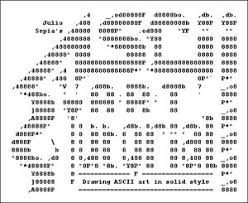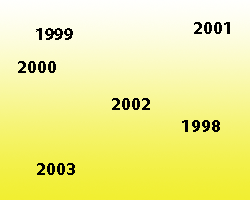Lesson Aim
- Explain the different sections of the scratch
- Create simple animations in Scratch
Task
Follow the instructions on the worksheets below to create two animations:
Work for Mr Ali's Classes
Follow the instructions on the worksheets below to create two animations:
You need to download the spreadsheet worksheets below and then complete the task sets in MS Excel.

You will learn how to create ascii art, your task is to follow the instructions on the worksheet below to create an ascii artwork. After completion of the worksheet you will then create an original artwork:
Your task
Click on the link below to access Scratch tutorials and work through them
https://scratch.mit.edu/projects/editor/?tutorial=getStarted
Do Now
Log In
Open Word and make a list of Web Search engines
Download the Word document below and use any search engine to answer the questions.
What year were you born in?
A lot of things probably happened in that year. How much do you know about the events of the year you were born?

Your task: Put your answers into a document using either Microsoft Word or Microsoft Publisher and add some pictures from the year in which you were born!
Use the Internet to help you answer the following questions about the year of your birth:
Your task: Put your answers into a document using either Microsoft Word or Microsoft Publisher and add some pictures from the year in which you were born!
Use the Internet to help you answer the following questions about the year of your birth:
What were some of the main headlines which were in the news? Find three news stories and write a short paragraph about them.
Which political party was in power?
Who was the Prime Minister?
Was Prince Charles married?
Which football club won the league?
What films were popular at the movies?
What pop songs were in the charts?
What were the most popular toys around that time?
What was in fashion?
Think of five more webquest questions and search for the answers